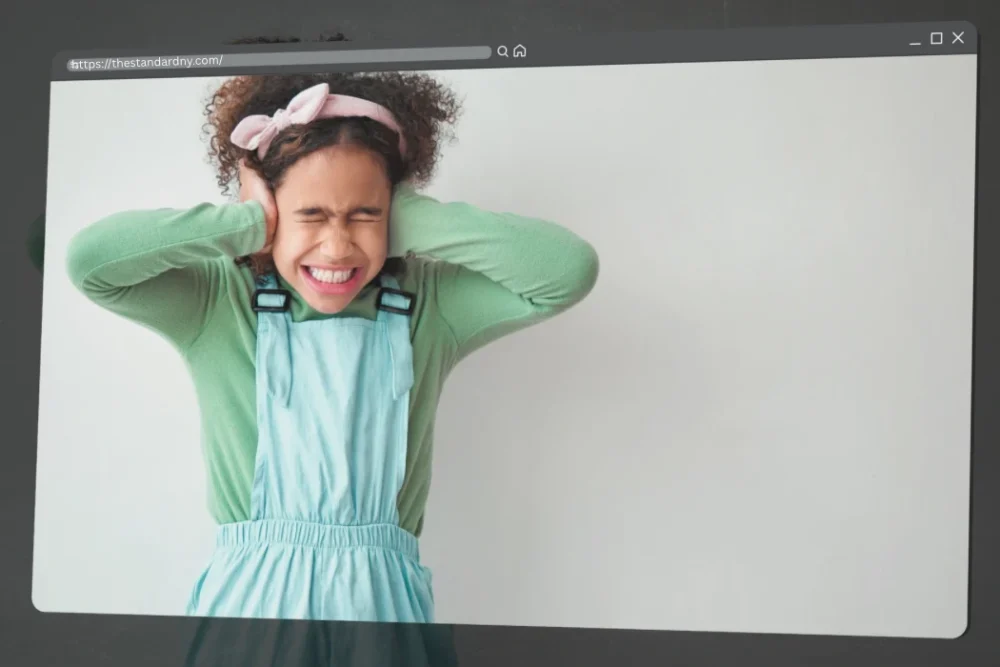In our neighborhoods, we fight for quality schools, clean playgrounds, and safer streets. But there’s a dangerous, invisible threat that often goes ignored: the air inside our homes and schools. It’s not dramatic. It doesn’t make the evening news. However, according to new research from Harvard’s Center on the Developing Child, indoor air pollution is one of the most serious and overlooked risks to our children’s health and development, especially in early childhood.
While we often focus on outdoor pollutants, according to the U.S. Environmental Protection Agency (EPA), most children spend more than 90% of their time indoors. And here’s the kicker: indoor air pollutants can be two to five times higher than outdoor levels.
Let that sink in! This means the living room, classroom, or daycare center could be exposing babies and toddlers to asthma triggers, neurotoxins, and allergens at unsafe levels, and you wouldn’t even know it.
Unlike adults, young children breathe faster and inhale more air relative to their body size. Their organs are still developing, their immune systems are not entirely constructed, and their brain chemistry is especially sensitive. This makes them far more vulnerable to toxins like mold spores, formaldehyde from furniture, cleaning products, and even “harmless” air fresheners.
A 2021 study in Environmental Health Perspectives showed that early exposure to volatile organic compounds (VOCs) – chemicals commonly found in paints, glues, and household products – was linked to increased hyperactivity and emotional issues in preschool-aged children. These are not just respiratory problems. We’re talking long-term cognitive and behavioral effects.
What This Means for Black and Brown Families
Low-income families and communities of color often face the worst housing conditions. Leaky pipes, outdated HVAC systems, pest issues, and overcrowded buildings are flagrant. These are real-life stressors for parents in New York City and beyond, especially in the Bronx, Harlem, Brownsville, and parts of Long Island, where aging public housing and underfunded schools are the norm.
A 2022 NYC Health report found that Black children are three times more likely to be hospitalized for asthma than their white peers. Poor indoor air quality is also a significant factor.
Schools, especially older buildings, are often ground zero for poor air quality. Faulty ventilation systems, dusty carpets, and unmaintained equipment can turn classrooms into hotspots for airborne contaminants.
Thankfully, the EPA’s IAQ Tools for Schools program offers a way forward. This toolkit helps school administrators identify indoor air hazards, assess HVAC systems, and take practical steps to reduce risk. The program even includes a mobile app for real-time building assessments. Parents can advocate for their local districts to use this resource because safe air should be non-negotiable.
Three Moves Parents Can Make Right Now
According to the Harvard working paper, the solution to cleaner indoor air involves three key strategies: protection, adaptation, and prevention. Here’s how parents can apply that at home:
1. PROTECTION:
Invest in HEPA air purifiers, especially in children’s bedrooms. Use non-toxic, fragrance-free cleaning products. Avoid smoking indoors, and don’t burn incense or candles regularly.
2. ADAPTATION:
Keep windows slightly open for natural ventilation when possible, even in winter. Use exhaust fans in kitchens and bathrooms. Vacuum with a HEPA-filtered machine at least twice a week.
3. PREVENTION:
Limit the use of VOC-heavy products like synthetic air fresheners, certain glues, and low-grade paints. Choose furniture and materials certified as low-emission. And if you’re renovating, opt for eco-friendly, non-toxic materials.
Advocate Like Your Child’s Life Depends on It—Because It Does
In communities already burdened by systemic neglect and environmental injustice, this conversation isn’t optional. It’s urgent. Air is not just something we breathe. It’s something that shapes brain development, emotional health, and life chances.
Whether you’re a parent, caregiver, teacher, or community advocate, it’s time to push for air quality improvements in homes, schools, and public spaces.
Start asking questions. What is your school’s HVAC maintenance schedule? Are air purifiers in classrooms? Is your child coughing more after daycare? Don’t let politeness prevent you from demanding answers.
Our babies deserve better. Let’s make air part of the parenting conversation instead of an afterthought.





